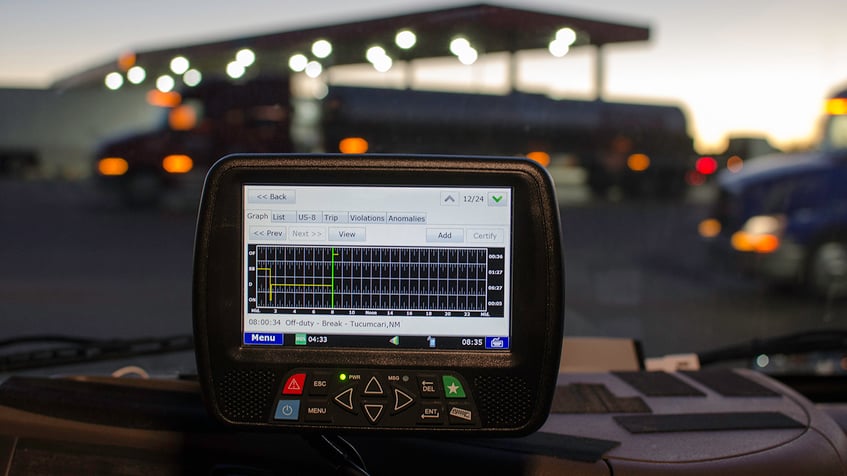REDWOOD LOGIN
Redwood PortalLTL
SCS
SCS Support
Rockfarm
If there is a group that is directly impacted by the ELD Mandate, it’s smaller carriers and private owner/operators. Most large FTL carriers have been using ELD systems since it went into law in 2015. The smaller or independent operators are careful about investing in equipment or new procedures until it’s required or officially required. With the mandate required by December 2018 for all carriers, the new regulations will require small carriers to invest in the right equipment and learn the steps for using the system.
An ELD or Electronic Logging Device is an electrical system that automatically monitors the drivers Hours of Service. The Mandate is a Federal regulation that was enacted into law in 2015 but is scheduled to take effect by December 16th, 2018. While there are some exemptions to the rule, the ELD Mandate will impact smaller carriers in several ways.
 The ELD system is a rather simple electrical device. It is attached to the vehicle’s engine and driveline system, and electronically calculates the Hours of Service that an individual driver uses each day. The driver logs into the ELD device and starts the clock. It is designed to remove the need for paper logs, which can be manipulated or not correctly documented by drivers occasionally. However, the ELD System is not necessarily a plug-and-play type of unit. In fact, most ELD units require multiple steps to stay within compliance of the ELD Mandate.
The ELD system is a rather simple electrical device. It is attached to the vehicle’s engine and driveline system, and electronically calculates the Hours of Service that an individual driver uses each day. The driver logs into the ELD device and starts the clock. It is designed to remove the need for paper logs, which can be manipulated or not correctly documented by drivers occasionally. However, the ELD System is not necessarily a plug-and-play type of unit. In fact, most ELD units require multiple steps to stay within compliance of the ELD Mandate.
Purchase the right ELD system: There are multiple brands, makes, and models of ELD Systems. However, there are a few general guidelines that all carriers must follow when purchasing a unit.
• They must be certified and published on the FMCSA’s website. The Federal Motor Carrier Safety Administration (FMCSA) is responsible for monitoring, activating, and enforcing the ELD Mandate. One of the requirements is that all ELD devices must be certified by the manufacturer as being compliant with the ELD Mandate and listed on the FMCSA website. You can browse a list of compliant ELD’s by clicking this link.
• Carriers must maintain documentation for installation, maintenance, and troubleshooting. Another item that impacts small carriers is the need to maintain the right records and paperwork for the installation, use, maintenance, and troubleshooting of any issues that the ELD system presents. Since all ELD systems are unique, it is best to contact the manufacturer of the ELD system purchased and installed to receive the correct documentation for each step. Never-the-less, this process takes time, which impacts smaller carriers with fewer resources much greater than a large FTL provider.
Once the ELD system has been installed, the carrier will need to train all applicable employees on using the ELD system. While it’s assumed that the only one using the ELD system is the driver, the truth is that multiple individuals will use this system including:
• Managers
• Administrative personnel
• Auditors
The carrier will need to set up individual accounts for all who use the ELD system. A good resource for finding out the details about who needs to have log-in accounts within an organization is visiting the FMCSA website.
Another issue that small carriers might experience with the ELD Mandate is allocating resources for training, installation, creating best practices, and testing the equipment – without compromising customer service. A smaller carrier typically does not have the extra staffing or budgets to activate changes with equipment or procedures – without it impacting their service or other areas of the business.
To reduce this potential, it might be a good idea for smaller carriers to slowly integrate ELD systems throughout their fleet. Here are a few tips to consider:
• Contact multiple ELD manufacturers and pick one that can help with integration. There are several ELD suppliers that will work with smaller carriers on how to install, train employees, and create best practices for use. The best thing any smaller carrier or private owner/operator can do is to contact a few manufacturers to see how they can assist.
• Speak with fellow smaller carriers who have already implemented the ELD system. Learning from others who have already gone through this process might reduce mistakes and downtime.
• Review the FMSCA website for exemptions. There are several smaller carriers who may qualify for either extensions or a full exemption.
Just like any other Federal regulation, the ELD Mandate is intended to help carriers over time. While the deadline for integration is quickly approaching, those who have not yet installed these systems would be smart to complete it sooner than later, so they can fine-tune their system and continue to provide excellent service to their customers.